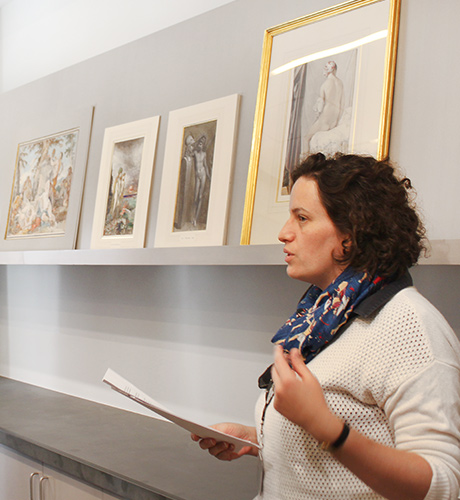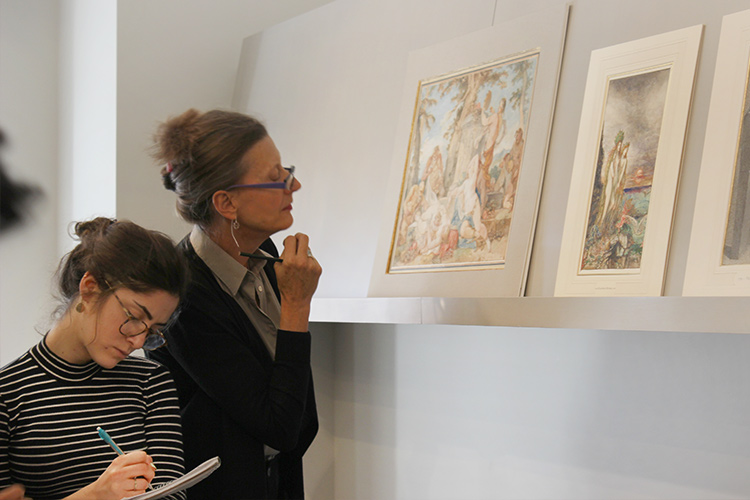The exhibition Drawing: The Invention of a Modern Medium (January 21–May 7, 2017) benefits from the contributions of more than a dozen Harvard students who took part in recent seminars taught by Harvard professor Ewa Lajer-Burcharth and Elizabeth Rudy, the Harvard Art Museums’ Carl A. Weyerhaeuser Associate Curator of Prints. This article introduces a short series detailing the students’ discoveries and perspectives.
Most exhibitions at the Harvard Art Museums are organized by curators and museums staff. Others are staged in collaboration with Harvard professors, who use original works to complement and enhance their teaching.
Drawing: The Invention of a Modern Medium represents a new approach. It was organized with critical input from more than a dozen Harvard students, who participated in recent seminars taught by Ewa Lajer-Burcharth, the William Dorr Boardman Professor of Fine Arts in the Department of History of Art and Architecture, and Elizabeth Rudy, the Carl A. Weyerhaeuser Associate Curator of Prints at the Harvard Art Museums. During the two seminars (one for graduate students and the other for undergraduates), students contributed to everything from the exhibition’s curatorial focus, to its final object list, to the accompanying publication.
Focusing on drawing’s emergence into modernity over the 18th and 19th centuries, both seminars explored how to use objects to tell a story. Graduate students elaborated upon the conceptual framework for the exhibition, narrowed down an object list, and drafted a set of essays that now form the basis of the exhibition’s publication. Undergraduates helped Lajer-Burcharth and Rudy plan for the display of the objects and drafted gallery labels and text for the digital tool that complements the installation.
As conveyed in their preface to the publication, Lajer-Burcharth and Rudy “found this experience to be both instructive and rewarding, and we believe that it has produced an extraordinary and original exhibition. We were impressed and pleased by the students’ excellent work, enthusiasm, and sustained commitment throughout the long process of preparing the show.”
Many of the students echoed their instructors’ enthusiasm. “The course was a complete joy,” said Eloise Lynton ’17, a history of art and architecture concentrator who was a student in the undergraduate seminar. “It was an amazing experience to study such exquisite works of art so closely and to actually have an impact on how they were discussed, hung, and portrayed.”
Lynton and a number of her peers made thought-provoking observations—in some cases, even important discoveries—about the drawings they studied. In the coming weeks, we’ll share some of their stories; stay tuned to hear about a new attribution, revealing juxtapositions, and close readings of the beautiful works on display.




